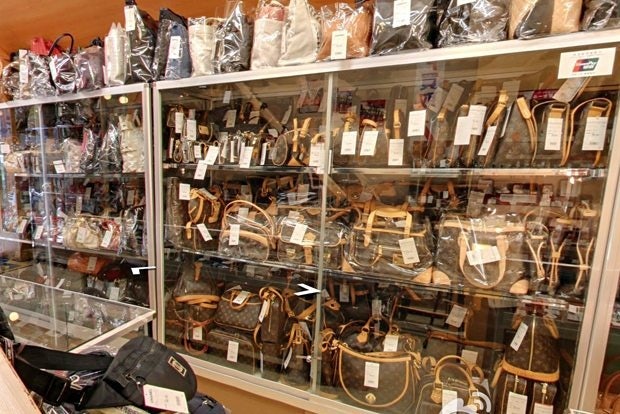
Secondhand luxury shops increasingly more popular across China, but a particular kind—the consignment luxury shop—comes out tops. (Weibo/edonchen)
China’s steadily growing secondhand market has received a lot of media coverage recently, and a Chinese news source says that it is a particular kind of secondhand luxury market—the luxury consignment—that is a hot favorite among consumers.
Chinese consumer daily Xiaofei Ribao (消费日报) reports that secondhand luxury stores in China are seeing a marked increase in business this year. Currently, the estimated value of secondhand luxury goods owned by Chinese consumers is worth 300 billion yuan ($48 billion)—with roughly an annual growth rate of 20 percent. From 512 secondhand luxury shops in 2012, that number increased by 37.8 percent to 823 in 2013. Furthermore, these shops are expanding in scope, and are spilling into Tier 2 and 3 cities.
Xiaofei Ribao explains the secondhand luxury market in China works in two ways: the first is where shops simply buy goods off of sellers based on the condition of the good, and resell them. The second is where sellers consign the goods to the shop, and the shop draws 10 to 20 percent commission from the sale. If the product fails to sell, the seller can choose to take it back.
The article reports that in a secondhand luxury consignment shop outside of the Beijing SOHO office and retail complex, hundreds of products from Hermès, Louis Vuitton, and more were selling for 20 to 50 percent of their retail prices, depending on how recent they were. “Not only can consumers get rid of their goods, they can pick up others while they’re at it. The popularity of these shops is driven by a lot of blind buying, and some of the consigned goods are still in their original packaging,” said shopkeeper Ms. Wu to the paper.
According to Xiaofei Ribao, China’s young professionals feel the need to keep up appearances for personal and work reasons, and luxury goods are the “first line of defense to keep up ‘face.’” A shopkeeper named Ms. Shi told the paper, “If you’re lucky, you can pick up some really good deals here. As long as you don’t tell people, no one will ever know it’s secondhand.”
Even as the stigma of buying someone’s discarded item gradually dissolved, willingness to buy luxury secondhand was slow to pick up. A 2013 Fortune Character Institute study found that only 34 and 18 percent of people in the Tier 1 cities of Beijing and Shanghai respectively were willing to buy secondhand goods that year, and the lower-tiered cities displayed even lower numbers.
Technological and economic developments have been a boon secondhand luxury’s recent ascent. Youni, introduced in late 2013, is a mobile social app that facilitates secondhand luxury sales. Within a couple of months, the media noticed and reported on the high number of transactions on the app this year. At the same time, the steep drop in value of secondhand luxury despite luxury retail price hikes is attractive for consumers who want to own labels, but can’t afford the price tag. While a boon to buyers, the sharp devaluation is chagrin to sellers, especially those who tried to rely on reselling their luxury goods as investments.